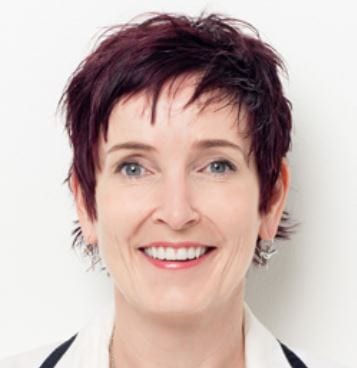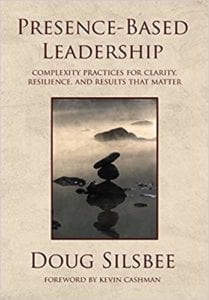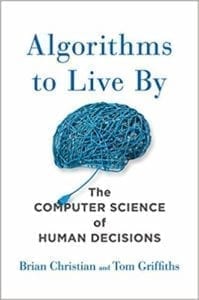Four Ways Leaders can Adapt to Complexity
The Art of Leadership Newsletter
Facing the challenges of the VUCA (volatility, uncertainty, complexity and ambiguity) business environment requires leaders to be able to adapt quickly and confidently. So, what makes some leaders better able to manage complexity and thrive whilst keeping a positive mindset and wellbeing? Our blog today, by guest author Audrey McGibbon, looks at the ways in which leaders can adapt to complexity, and the actions that successful leaders tend to take.
Warm regards
Virginia Mansell
Founding Partner
Four Ways Leaders can Adapt to Complexity
The most effective leaders recognise and acknowledge a high degree of complexity does not lend itself well to traditional management practices, and they change their approach accordingly. But how do they change? When it comes to managing complexity and ambiguity, leaders who are regarded as more satisfying to work for and more effective in their roles as leaders tend to do four things:
1. They Move from ‘leadership hierarchies’ to ‘leadership wirearchies’
Leading in knowledge-intensive organisations (KIOs) requires a shift in thinking and practices. Perpetuating the traditional focus on ‘heroic’ or ‘charismatic’ leaders who are at the top of the hierarchy is ineffective for communication flow in KIOs. Insufficient and poor-quality communication flow is frequently cited as one of the key sources of employee frustration and disempowerment, even at senior levels within organisations. There is a better way of connecting the dots, adapting old structures to new challenges – and that way is to apply some ‘systems thinking’ to your leadership infrastructure. Play down your hierarchy and step up on wirearchy.
A ‘wirearchy’ is a dynamic two-way flow of power and authority, based on knowledge, trust, credibility and a focus on results, enabled by interconnected people and technology. It’s about the effectiveness of people working together through connection and collaboration. And it offers a big boost for workplace wellbeing as frustrations, red tape and inefficiencies melt away, and as the opportunity grows for people to engage and connect in more satisfying and interesting ways.
2. They Think Systems
Flatter organisations are having their moment. Research has shown that reducing hierarchy can lead to more satisfied employees and speedier decision-making. Where leadership is reframed as being ‘the product of interactions taking place across organisations, in the space between people, in fluid circumstances, and where leadership can pass between people as the situation changes’ we see dramatically more engaged, productive and satisfied people.
The most satisfied and successful teams span their boundaries, develop networks and work collaboratively. After a period of adjustment – where traditional authority and governance is gradually reconfigured to be experienced as a more coordinated influence and force for change, embedded in the diverse interactions between people at all levels – leaders of the most satisfied and innovative groups report that all members of their groups collectively and concurrently evolve to also share the space of serving actively as a leader. Members of such teams describe thriving in environments where they are encouraged to lead the creative potential of the team regardless of their positions, and where they have an opportunity to immerse themselves in ‘emergence’ – in the existence of something bigger than their individual parts.
3. They Create a Culture of Collective Leadership
Collective leadership may not only be advisable in a VUCA world, but required as a necessity for the contribution of, creativity from, and collaboration among and across, multiple ‘levels’ of employees. From a development and personal growth perspective, a culture of collective leadership fosters greater intellectual engagement and flow, a key tenet of the GLWS wellbeing framework:
- Immersion into sharing of ideas
- Freedom to innovate
- Development of mastery and expertise
- Expansion and challenge for our minds
- Playing to our strengths
- Fully utilising our capacities
But best to take heed – not everyone is a fan of collective leadership! Narcissists like hierarchical organisations better because they think they will rise to high ranks and reap status and power. They are less interested in flatter organisations where there are fewer high ranks to attain. So, if your team’s priority is to win in negotiations and you/they don’t mind being disliked and show a bias for action towards aggressive pursuit of potential rewards, then maybe best stick to the hierarchy!
4. They create a Leaderful Organisation
‘Leaderful organisations’ enhance their agility by stimulating and coordinating a diversity of perspectives. Such leadership becomes infused with an inclusivity of diverse perspectives rather than aligned hierarchies, and it is this new approach that contributes to successful emergence – the creative potential, innovation and productivity of an organisation. Employees at all levels in leaderful organisations value their nominal (hierarchical) leaders as being:
- Inclusive of ideas
- Understanding of the basic contexts and needs of group members
- Responsive
- Flexible in attending to group dynamics and
- Enablers of the ‘emergence champions’
Arguably, an organisation’s greatest challenge today is to create a collaborative environment in which people find a state of engagement and concentration that leads them to perform better. The aim is not to achieve a momentary psychological state of being, but rather to find ways of working and collaborating better.
The result? Improved general wellbeing which is mutually beneficial to both the individual and the organisation.
Article first published via www.glwswellbeing.com/
About the Author:

Audrey McGibbon, Co-founder & Director – EEK & SENSE & Co-author – GLWS (Global Leadership Wellbeing Survey) MA (Hons) Psychology and Business, Registered Psychologist, C. Psychol AFBPsS Div. Occ. Psych., MSc Psychotherapy Studies.
Audrey is an expert on all matters relating to leader wellbeing, Her career experience as a business psychologist, executive coach, entrepreneur and wellbeing researcher mean that she is well-placed to offer direct and knowledgeable insights. Recent engagements include Wellbeing at Work events in Sydney, the British Psychological Society Division of Occupational Psychology conference in the UK, invited guest to the Global Dialogue on Happiness and Wellbeing at the 2019 World Government Summit, and various Wellbeing & Performance seminars across Australia for a wide range of industry and professional bodies.
What’s On
 Move from ‘okay’ to ‘Oh-Yay!’
Move from ‘okay’ to ‘Oh-Yay!’
Join us for our in-demand Executive Presence programs and take your presentation skills to the next level.
Hear from past attendees:
“Group feedback was brilliant! Detailing a principle and then providing examples and practice was very helpful.”
“Peter is very engaging and personable – He respectfully challenges and moves you out of your comfort zone.”
“Peter’s style is highly engaged and his energy much appreciated.”
“Very engaging, humorous and forces people to drop pretensions or barriers”
Facilitated by the former Head of Directing at the National Institute for Dramatic Art (NIDA), Peter Kingston. Join us if you are a leader wanting to ensure impact, influence, and effective negotiation skills!
SYDNEY: Executive Presence and Impact Workshop, Sydney – 20th June 2019
BRISBANE: Executive Presence and Impact Masterclass, Brisbane – 21st August 2019
What’s your Leadership Perspective?
 Set your leadership goals for 2020 and become the best leader you can be.
Set your leadership goals for 2020 and become the best leader you can be.
Structured to provide female senior leaders with knowledge plus, the hands-on skills to show who they are and what sort of leader they can be. This program focuses on personal presence and communication; resilience; change and complexity; and finding mentors and sponsors.
Run across two separate one-day workshops, and supported by two individual coaching sessions, this program helps drive your leadership potential.
Brisbane – Perspectives on Leadership for Women – 25 October & 29 November
What’s trending in leadership?

Ernst and Young explore Collective Leadership and the benefits of working together in collaboration when faced with complexity.
SMG Recommends
In need of some reading inspiration…

Presence-Based Leadership: Complexity Practices for Clarity, Resilience, and Results That Matter by Doug Silsbee
Captivating book filled with keys to leadership presence, resilience and courage in uncertain times.

Algorithms to Live By: The Computer Science of Human Decisions by Brian Christian & Tom Griffiths.
A fascinating exploration of how insights from computer algorithms can be applied to our everyday lives, helping to solve common decision-making problems and illuminate the workings of the human mind.









